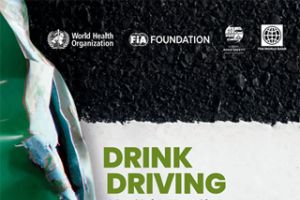
Overview
Burden of Road Injuries in Sub-Saharan Africa ⌵︎
The 2010 Global Burden of Disease (GBD-2010) was a systematic effort to quantify the comparative magnitude of global health loss due to 291 diseases and injuries, 67 risk factors, and 1,160 sequelae by age, sex, and country from 1990 to 2010. The project was led by the Institute for Health Metrics and Evaluation (IHME) and included a consortium of academic institutions. The World Bank Global Road Safety Facility commissioned a special effort at Harvard University to improve the estimates of road injuries in sub-Saharan Africa generated as part of GBD-2010 by incorporating more data and better methods for the region.
Executive Summary ⌵︎
The UN Decade of Action for Road Safety 2011-2020 calls on national governments in sub-Saharan Africa and worldwide to direct substantial resources to stem the increasing burden of road traffic injuries. Bringing such attention to road safety requires demonstrating the importance of the problem relative to other major threats that currently confront sub-Saharan Africa. Therefore, in this study, we estimate the burden of road injuries relative to other health issues in the region through a systematic and scientific effort to quantify the comparative magnitude of health loss due to all diseases and injuries. We track the relative evolution of diseases and injuries since 1990 to show the increasing importance of road injuries to the health and development agenda in sub-Saharan Africa. We find that:
-
Road injury deaths are severely underreported in most sub-Saharan countries. Our estimates are often six times those of official government statistics. In Nigeria, they are 14 times the official statistics of the national road death toll.
-
Road injuries killed 231,000 people in sub-Saharan Africa in 2010, accounting for almost one-fifth of the global road injury death toll. In addition, there were over 8 million non-fatal injuries, of which 885,000 were severe enough to warrant hospital admission if adequate access to medical care were available. The combined burden of non-fatal road injuries in sub-Saharan Africa exceeded 14 million healthy life years lost.
-
Western, Central and Eastern sub-Saharan Africa have the highest road injury death rates of any global region. The death rate in Western sub-Saharan Africa is more than four times the rate in Western Europe. • Road injuries are the 8th leading cause of death in sub-Saharan Africa and the 10th leading cause of healthy life years lost. The public health burden of road injuries exceeds that from tuberculosis and maternal disorders.
-
Deaths due to road injuries have grown by 84% in sub-Saharan Africa since 1990, almost twice the global increase. The Western and Southern regions of sub-Saharan Africa had the highest growth in road deaths of any region in the world, more than doubling over this period.
-
Road injuries are the 7th leading cause of death in males in sub-Saharan Africa. They are the 13th leading cause of death in females, compared with 18th globally. The road injury death rate for females in Western sub-Saharan Africa is more than twice the global average and almost five times the rate in Western Europe.
-
Road injuries pose a high burden over the entire life course in sub-Saharan Africa, impacting not just young adults but also children and the elderly. Among children aged 1-4 years, road injuries are the 8th leading cause of death in the region. Among adults aged 70+ years, road injuries are the 12th leading cause of death and 14th leading cause of healthy life years lost, compared with 26th and 23rd globally.
-
Pedestrians comprise 44% of road deaths in sub-Saharan Africa, substantially more than the global average of 35%. The rate of pedestrian deaths in Western sub-Saharan Africa is 8 times the rate in Western Europe.
-
Nigeria has the highest road injury death rate (52.4 per 100,000 people) of any country globally. Mozambique has the third highest death rate (46.7 per 100,000). These rates are more than 15 times the death rates in Sweden, UK, and the Netherlands, which have among the lowest death rates globally.
-
Four countries (Nigeria, Ethiopia, South Africa, and Sudan) together account for half the road injury death toll of sub-Saharan Africa.
Road safety has emerged as an important health priority in sub-Saharan Africa. Trends over the last two decades show that road injury rates in the region have remained at among the highest in the world even though substantial improvements are being made in controlling other diseases, such as tuberculosis, malaria, and diarrheal disease. Unless significant preventive efforts are undertaken, road safety will continue to climb in regional health rankings during the UN Decade of Action for Road Safety. National governments and the international development community need to prioritize road safety in the region and implement the recommendations of the 2004 World Report on Road Traffic Injury Prevention.
Did you know?
82% of Road Crash Fatalities and Injuries in the economically productive age groups (15 - 64 years.)
82% of Road Crash Fatalities and Injuries in the economically productive age groups (15 - 64 years.)


